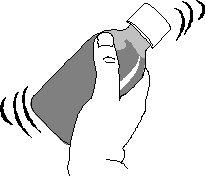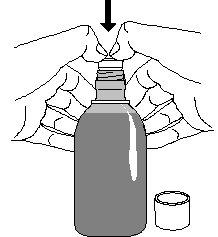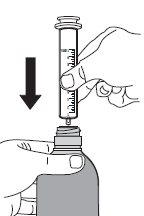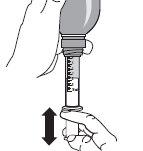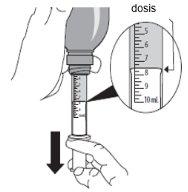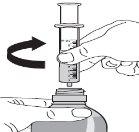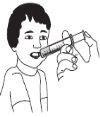
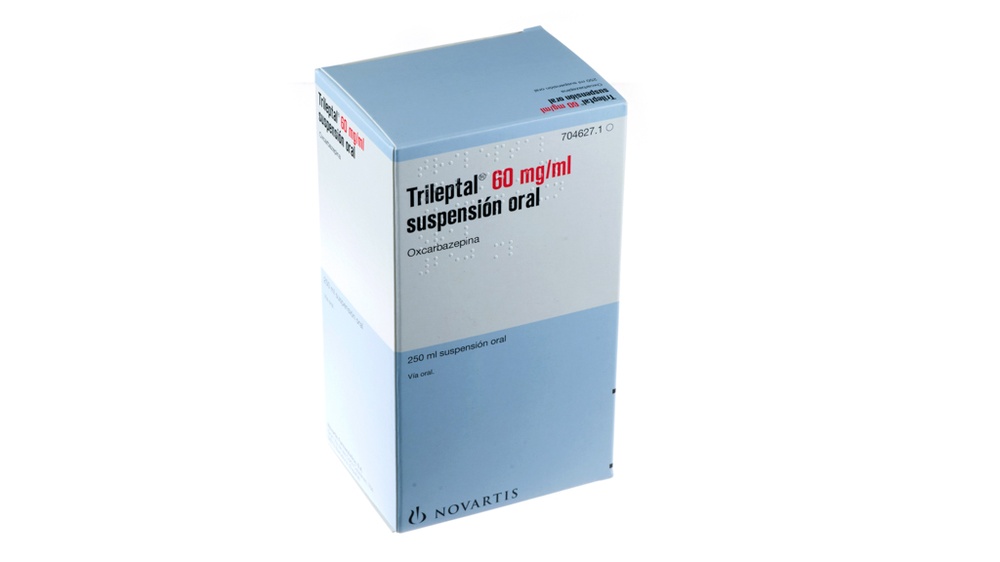
TRILEPTAL 60 mg/ml ORAL SUSPENSION

Ask a doctor about a prescription for TRILEPTAL 60 mg/ml ORAL SUSPENSION

How to use TRILEPTAL 60 mg/ml ORAL SUSPENSION
Introduction
Package Leaflet: Information for the User
Trileptal 60 mg/ml Oral Suspension
oxcarbazepine
Read all of this leaflet carefully before you start taking this medicine because it contains important information for you.
- Keep this leaflet, you may need to read it again.
- If you have any further questions, ask your doctor or pharmacist.
- This medicine has been prescribed for you only. Do not pass it on to others. It may harm them, even if their signs of illness are the same as yours.
- If you get any side effects, talk to your doctor or pharmacist. This includes any possible side effects not listed in this leaflet. See section 4.
Contents of the pack
- What is Trileptal and what is it used for
- What you need to know before you take Trileptal
- How to take Trileptal
- Possible side effects
- Storage of Trileptal
- Contents of the pack and other information
1. What is Trileptal and what is it used for
What is Trileptal
Trileptal contains the active substance oxcarbazepine.
Trileptal belongs to a group of medicines called anticonvulsants or antiepileptics.
What Trileptal is used for
Medicines like Trileptal are standard treatments for epilepsy.
Epilepsy is a brain disorder that causes people to have recurrent seizures and convulsions. Seizures occur due to a temporary failure in the electrical activity of the brain. Normally, brain cells coordinate body movements by sending signals through muscle nerves in an orderly organized manner. In epilepsy, brain cells send too many signals in a disordered manner. The result can be uncoordinated muscle activity known as an epileptic seizure.
Trileptal is used to treat partial epileptic seizures with or without secondary generalization with tonic-clonic seizures. Partial seizures involve a limited area of the brain but can spread to the entire brain and produce generalized tonic-clonic seizures. There are two types of partial seizures: simple and complex. In simple partial seizures, the patient remains conscious, while in complex seizures, the state of consciousness is altered.
Trileptal works by keeping overexcited nerve cells in the brain under control, thereby suppressing or reducing the frequency of such seizures.
Trileptal can be used alone or in combination with other antiepileptic medicines.
Normally, your doctor will try to find the medicine that works best for you or your child. However, in severe epilepsy, you may need a combination of two or more medicines to control seizures. Trileptal is indicated for use in adults and children aged 6 years or older.
If you have any doubts about how Trileptal works or why you have been prescribed this medicine, ask your doctor.
2. What you need to know before you take Trileptal
Follow carefully all instructions given by your doctor, even if they differ from the general information provided in this leaflet.
Monitoring during treatment with Trileptal
Before and during treatment with Trileptal, your doctor may perform a blood test to determine your dose. Your doctor will tell you when to have the tests.
Do not take Trileptal:
- if you are allergic to oxcarbazepine or any of the other ingredients of this medicine (listed in section 6) or if you are allergic to eslicarbazepine.
If you are allergic, inform your doctor before taking Trileptal. If you think you are allergic, ask your doctor.
Warnings and precautions
Consult your doctor or pharmacist before starting to take Trileptal:
- if you have ever suffered from any unusual allergic reaction(rash or any other type of allergy) to carbamazepine or any other medicine. If you are allergic to carbamazepine, the likelihood of you being allergic to oxcarbazepine (Trileptal) is 1 in 4 (25%).
- if you have kidney disease.
- if you have severe liver disease.
- if you are taking diuretics(medicines to help the kidneys eliminate salt and water by increasing urine production).
- if you have heart disease, shortness of breath and/or swelling of feet or legs due to fluid retention.
- if your blood sodium level is lowas shown by your blood test (see section 4).
- if you are a woman taking oral contraceptives(such as the pill), Trileptal may make the contraceptive not work. Use a non-hormonal contraceptive method or an extra one while taking Trileptal. This can help prevent an unwanted pregnancy. Inform your doctor immediately if you have irregular vaginal bleeding or spotting. If you have any doubts about this, consult your doctor or healthcare professional before taking Trileptal.
The risk of serious skin reactions in Han Chinese or Thai patients associated with carbamazepine or chemically related compounds can be predicted by blood tests. Your doctor will advise you if a blood test is necessary before taking oxcarbazepine.
If you notice any of the following symptoms after taking Trileptal, inform your doctor immediately or go to the Emergency Department of the nearest hospital:
- if during treatment you suffer an allergic reaction. Symptoms include swelling of lips, eyelids, face, throat, mouth, or sudden respiratory problems, fever with swollen lymph nodes, rash, or blisters on the skin.
- if you notice symptoms suggesting hepatitis, such as jaundice (yellowing of the skin or the white of the eyes).
- if you notice an increase in the frequency of seizures. This is especially important in children, but it can also occur in adults.
- if you notice possible symptoms of blood disorderssuch as fatigue, shortness of breath when exercising, paleness, headache, chills, dizziness, frequent infections with fever, sore throat, mouth ulcers, bleeding or bruising more often than usual, nosebleeds, red or purple spots, or spontaneous appearance of spots on the skin.
- a small number of people treated with antiepileptics like Trileptal have had thoughts of self-harm or suicide. If at any time you experience these thoughts, contact your doctor immediately.
- if you notice that your heart rate is fast or unusually slow.
- Children and adolescents
For treatment in children, your doctor may recommend monitoring thyroid function before and during treatment.
Using Trileptal with other medicines:
Tell your doctor or pharmacist if you are taking, have recently taken, or might take any other medicines.
Especially in the case of:
- Oral contraceptives such as the pill (see section Warnings and precautions).
- Other antiepileptic medicines and enzyme-inducing medicines such as carbamazepine, phenobarbital, phenytoin, or lamotrigine and rifampicin.
- Medicines that reduce blood sodium levels, such as diuretics (used to help the kidneys eliminate salt and water by increasing urine production), desmopressin, and non-steroidal anti-inflammatory medicines such as indomethacin.
- Lithium and monoamine oxidase inhibitors (medicines used to treat mood disorders and some types of depression).
- Medicines that control the body's immune system such as cyclosporin and tacrolimus.
Taking Trileptal with food and alcohol
Trileptal can be taken with or without food. During treatment with Trileptal, avoid drinking alcoholic beverages as it may increase the sedative effects of this medicine; if in doubt, consult your doctor.
Pregnancy and breastfeeding
Pregnancy
If you are pregnant, think you may be pregnant, or plan to become pregnant, consult your doctor or pharmacist before using this medicine.
It is essential to control epileptic seizures during pregnancy. However, there may be a risk to your baby if you take antiepileptic medicines during pregnancy.
Congenital malformations
Studies have not shown an increased risk of congenital malformations associated with oxcarbazepine administered during pregnancy; however, it cannot be entirely ruled out that there is a risk of congenital malformations in the fetus.
Neurodevelopmental disorders
Some studies have shown that exposure to oxcarbazepine in the womb affects the development of brain function (neurodevelopment) in children, while others have not observed this effect. The possibility that there may be an effect on neurodevelopment cannot be ruled out.
Your doctor will inform you of the benefits and possible risks of treatment and help you decide whether you should take Trileptal.
Do not stop your treatment with Trileptal during pregnancy without first consulting your doctor.
Breastfeeding
If you are taking this medicine, consult your doctor before starting breastfeeding. The active substance of Trileptal passes into breast milk. Although the available data suggest that the amount of Trileptal that passes to the breastfed child is low, a risk of adverse effects in the baby cannot be ruled out. Your doctor will inform you of the benefits and potential risks of breastfeeding while using Trileptal. If you are breastfeeding during treatment with Trileptal and think your baby is experiencing any adverse effects such as excessive sleepiness or poor weight gain, inform your doctor immediately.
Driving and using machines
Trileptal can cause symptoms such as drowsiness, dizziness, or changes in vision, and reduce your reaction ability. These effects, as well as the disease itself, can make it difficult for you to drive vehicles or operate machines. Therefore, do not drive, operate machines, or engage in other activities that require special attention until your doctor assesses your response to this medicine.
It is essential to consult your doctor if you can drive or operate machines while taking this medicine.
Trileptal contains sorbitol (E420), propylene glycol (E1520), parahydroxybenzoates, sodium, and ethanol
Trileptal oral suspension contains:
- Sorbitol (E420): This medicine contains 175 mg of sorbitol in each 1 ml of oral suspension.
Sorbitol is a source of fructose. If your doctor has told you (or your child) that you have an intolerance to certain sugars, or you have been diagnosed with hereditary fructose intolerance (HFI), a rare genetic disease in which the patient cannot break down fructose, consult your doctor before taking this medicine.
Sorbitol can cause gastrointestinal upset and a mild laxative effect.
- Propylene glycol (E1520): this medicine contains 25 mg of propylene glycol in each 1 ml of oral suspension.
- Parahydroxybenzoates: propyl parahydroxybenzoate (E216) and methyl parahydroxybenzoate (E218), which may cause allergic reactions (possibly delayed).
- Sodium: this medicine contains less than 1 mmol of sodium (23 mg) per 1 ml; this is, essentially "sodium-free".
- Etanol: This medicine contains 0.8 mg of alcohol (ethanol) in each 1 ml of oral suspension. The amount in 1 ml of this medicine is equivalent to less than 0.02 ml of beer or 0.01 ml of wine. The small amount of alcohol in this medicine does not produce any noticeable effect.
3. How to take Trileptal
Follow exactly the instructions for administration of this medicine given by your doctor or pharmacist. In case of doubt, consult your doctor or pharmacist again.
The dose must be indicated in milliliters (ml)
The dose prescribed by your doctor must be indicated in milliliters (ml)and not in milligrams (mg). This is important because the oral dosing syringe used to extract the correct dose from the bottle is marked in milliliters. If your prescription is in milligrams, do not take the medicine and consult your doctor or pharmacist as soon as possible.
How much to take
Use in adults
- The recommended dosefor adults (including elderly patients) is 10 ml of oral suspension (600 mg of oxcarbazepine) per day.
- Take a dose of 5 ml of oral suspension (300 mg of oxcarbazepine) twice a day.
- Your doctor may gradually increase this dose to obtain the best dose for you. The best results are usually with doses between 10 ml and 40 ml of oral suspension (600 mg of oxcarbazepine to 2,400 mg of oxcarbazepine) per day.
- The dose is the same if Trileptal is taken with another antiepileptic medicine.
- If you have kidney problems (renal insufficiency), the initial dose is half the normal initial dose.
- If you have severe liver disease, your doctor will adjust the dose.
Use in children and adolescents
Trileptal can be used in children aged 6 years or older.
The recommended dose for children will be calculated by the doctor and depends on the child's weight.
- The initial dose is 8 to 10 milligrams per kilogram of body weight per day, administered in two doses. For example, a 30 kg child will start treatment with a dose of 150 mg (2.5 ml of oral suspension) twice a day.
- Your doctor may gradually increase the dose to obtain the best dose for the child. The best results are usually with a dose of 30 milligrams per kilogram of body weight per day. The maximum dose for a child is 46 milligrams per kilogram of body weight per day.
How to take Trileptal
For complete instructions on how to take Trileptal, see the Instructions for usesection at the end of this leaflet.
When and for how long to take Trileptal
Take Trileptal twice a day, every day, approximately at the same time of day, unless your doctor tells you otherwise. This will have the best effect to control epilepsy. It will also help you remember when to take the oral suspension.
Your doctor will inform you how long your treatment or your child's treatment will last. The duration of treatment will depend on the type of seizures you or your child suffer from. It may be necessary to continue treatment for several years to control epileptic seizures. Do not change the dose or stop treatment without first talking to your doctor.
If you take more Trileptal than you should
In case of overdose or accidental ingestion, consult your doctor or pharmacist immediately or call the Toxicology Information Service, phone: 91 562 04 20, indicating the medicine and the amount taken. The symptoms of overdose with Trileptal may include:
- drowsiness, dizziness, coordination problems and/or involuntary eye movements, muscle contractions, or significant worsening of seizures, headache, loss of consciousness, coma,
- nausea, vomiting, increased uncontrolled movements,
- numbness, double vision, decreased pupil size or constriction, blurred vision,
- fatigue,
- short, shallow, and rapid breathing (respiratory depression),
- irregular heartbeat (prolonged QTc interval),
- tremor, headache, coma, decreased level of consciousness, uncontrolled movements of the mouth, tongue, and limbs,
- aggression, agitation, confusion,
- low blood pressure,
- breathing difficulties.
If you forget to take Trileptal
If you have forgotten a dose, take it as soon as you can, except if it is almost time for the next dose; in this case, wait and return to your usual administration schedule. Do not take a double dose to make up for forgotten doses.
If you are unsure or have forgotten several doses, inform your doctor.
If you stop taking Trileptal
Do not stop taking your medicine without first consulting your doctor.
To prevent a sudden worsening of seizures, do not stop treatment abruptly.
If you stop your treatment, it should be done gradually as indicated by your doctor.
If you have any other doubts about the use of this medicine, ask your doctor or pharmacist.
4. Possible Adverse Effects
Like all medicines, this medicine can cause adverse effects, although not all people suffer from them.
Inform your doctor immediately or go to the emergency department of the nearest hospital if you experience any of the following adverse effects:
The following are symptoms of potentially serious adverse effects that may require urgent medical treatment.
Your doctor will decide whether to immediately discontinue treatment with Trileptal and how to continue your treatment in the future.
Uncommon(may affect up to 1 in 100 patients):
- Weight gain, fatigue, hair loss, muscle weakness, feeling of cold (signs of low thyroid activity).
- Falls
Rare(may affect up to 1 in 1,000 patients):
- Inflammation of the lips, eyelids, face, throat, or mouth, accompanied by difficulty breathing, speaking, or swallowing (signs of anaphylactic reactions and angioedema).
- Skin rash and/or fever, which can be manifestations of drug reaction with eosinophilia and systemic symptoms (DRESS), or acute generalized exanthematous pustulosis (AGEP).
- Fatigue, shortness of breath when exercising, paleness, headache, chills, dizziness, frequent infections with fever, sore throat, mouth ulcers, bleeding, or bruising more often than usual, nosebleeds, reddish-purple spots, or spontaneous appearance of spots on the skin (signs of a decrease in the number of platelets or a decrease in the number of blood cells).
- Numbness, confusion, muscle contractions, or significant worsening of seizures (possible symptoms of low sodium levels in the blood due to inadequate secretion of antidiuretic hormone (ADH)) (see Warnings and Precautions section).
Very Rare(may affect up to 1 in 10,000 patients):
- Signs of hypersensitivity reactions (allergy) such as skin rash, fever, and pain in the muscles and joints.
- Severe blistering of the skin and/or mucous membranes of the lips, eyes, mouth, nasal passages, or genitals (signs of severe allergic reaction, including Lyell's syndrome, Stevens-Johnson syndrome, and erythema multiforme).
- Rash with red spots mainly on the face, which may be accompanied by fatigue, fever, feeling of dizziness (nausea), or loss of appetite (sign of systemic lupus erythematosus).
- Flu-like symptoms with jaundice (yellowing of the skin and the whites of the eyes) (signs of hepatitis).
- Severe upper abdominal pain, nausea (vomiting), loss of appetite (signs of pancreatitis).
Inform your doctor as soon as possible if you experience any of the following adverse effects.They may require medical attention:
Common(may affect up to 1 in 10 patients):
- Tremors, coordination problems, involuntary eye movements, anxiety, and nervousness, depression, mood changes, skin rash.
Very Rare(may affect up to 1 in 10,000 patients):
- Irregular heartbeat or a very fast or slow heartbeat.
Other Adverse Effects that May Occur:
These are mild to moderate adverse effects of Trileptal. Most of these effects are temporary and usually decrease over time.
Very Common(may affect more than 1 in 10 patients):
- Fatigue, headache, dizziness, drowsiness, feeling of dizziness (nausea), nausea (vomiting), and double vision.
Common(may affect up to 1 in 10 patients):
- Weakness, memory disorders, difficulty concentrating, apathy, agitation, confusion, blurred vision, constipation, diarrhea, abdominal pain, acne, hair loss, vertigo, weight gain, speech disorders.
Uncommon(may affect up to 1 in 100 patients):
- High blood pressure (hypertension), hives.
- Liver enzyme levels may also increase while taking Trileptal.
Rare(may affect up to 1 in 1,000 patients):
- Reports of bone disorders, including osteopenia and osteoporosis (decrease in bone mass), and fractures. Inform your doctor or pharmacist if you have been taking antiepileptics for a long time, have a medical history of osteoporosis, or are taking steroids.
Reporting Adverse Effects
If you experience any type of adverse effect, consult your doctor or pharmacist, even if it is a possible adverse effect that is not listed in this prospectus. You can also report them directly through the Spanish Pharmacovigilance System for Human Use Medicines, www.notificaRAM.es. By reporting adverse effects, you can contribute to providing more information on the safety of this medicine.
5. Storage of Trileptal
Keep this medicine out of the sight and reach of children.
Do not use this medicine after the expiration date shown on the packaging. The expiration date is the last day of the month indicated.
Once the packaging is opened, use it within the following 7 weeks.
After 7 weeks, return the unused oral suspension to your pharmacy for safe disposal.
Do not use this medicine if you notice that the packaging is damaged or shows signs of tampering.
Medicines should not be thrown down the drain or into the trash. Deposit the packaging and medicines you no longer need at the SIGRE point in your pharmacy. If in doubt, ask your pharmacist how to dispose of the packaging and medicines you no longer need. This will help protect the environment.
6. Packaging Contents and Additional Information
Composition of Trileptal
- The active ingredient is oxcarbazepine. Each ml of oral suspension contains 60 mg of oxcarbazepine.
- The other components (excipients) are: purified water, sorbitol (E420) 70% (non-crystallizing), propylene glycol (E1520), dispersible cellulose, ascorbic acid (E300), lemon plum flavor (contains ethanol), methyl parahydroxybenzoate (E218), macrogol 400 stearate, sorbic acid (E200), sodium saccharin, propyl parahydroxybenzoate (E216).
Appearance of the Product and Packaging Contents
Trileptal oral suspension is presented as a whitish suspension that tends to a reddish-brown color. The discoloration of the oral suspension to a slightly reddish-brown color is normal and does not affect the quality of the product.
Trileptal oral suspension is presented in amber glass bottles containing 250 ml of oral suspension. The bottles come with a child-resistant cap, a 10 ml dosing syringe, and a bottle adapter.
Marketing Authorization Holder and Manufacturer
Novartis Farmacéutica, S.A.
Gran Vía de les Corts Catalanes, 764
08013 Barcelona
Spain
Manufacturer
Novartis Pharma GmbH
Roonstrasse 25 (Nuremberg)
D-90429 – Germany
Novartis Pharma GmbH
Sophie-Germain-Strasse 10
Nuremberg 90443
Germany
Novartis Farmacéutica, S.A. Gran Vía de les Corts Catalanes, 764, 08013 Barcelona Spain
This medicine is authorized in the Member States of the European Economic Area and in the United Kingdom (Northern Ireland) under the following names:
Austria: Trileptal
Belgium: Trileptal
Croatia: Trileptal
Denmark: Trileptal
Finland: Trileptal
France: Trileptal
Germany: Trileptal
Greece: Trileptal
Iceland: Trileptal
Ireland: Trileptal
Netherlands: Trileptal
Portugal: Trileptal
Spain: Trileptal
Sweden: Trileptal
United Kingdom (Northern Ireland): Trileptal
Date of the last revision of this prospectus:March 2023
Detailed information about this medicine is available on the website of the Spanish Agency for Medicines and Health Products (AEMPS) http://www.aemps.gob.es/
_____________________________________________________________________________
Página 1
INSTRUCTIONS FOR USE
Please read these instructions carefully to know how to use this medicine
How to use the medicine kit
The medicine kit consists of three parts


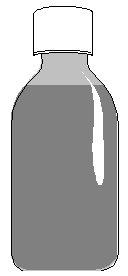
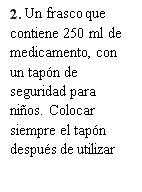
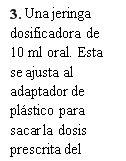

Página 2
How to adjust the plastic adapter on a new medicine bottle
|
Note:Keep the cap nearby to close the bottle after each use |
|
Note:You may not be able to push the adapter all the way down, but it will be fully inserted into the bottle when you screw the cap back on. Please follow all instructions for dispensing the dose in Preparing a dose of medicine. |
Página 3
Preparing a dose of medicine
| The medicine can be taken directly from the oral syringe or mixed with a small amount of water before taking it.
|
|
|
|
|
|
Note: If the prescribed dose is more than 10 ml, extract the dose in two steps. First, fill the syringe up to the 10 ml mark, and then load the 10 ml. After that, reload the oral syringe to complete the dose. Ask your pharmacist if you are unsure. |
|
|
|
|

How much does TRILEPTAL 60 mg/ml ORAL SUSPENSION cost in Spain ( 2025)?
The average price of TRILEPTAL 60 mg/ml ORAL SUSPENSION in December, 2025 is around 11.04 EUR. Prices may vary depending on the region, pharmacy, and whether a prescription is required. Always check with a local pharmacy or online source for the most accurate information.
- Country of registration
- Average pharmacy price11.04 EUR
- Active substance
- Prescription requiredYes
- Manufacturer
- This information is for reference only and does not constitute medical advice. Always consult a licensed doctor before taking any medication. Oladoctor is not responsible for medical decisions based on this content.
- Alternatives to TRILEPTAL 60 mg/ml ORAL SUSPENSIONDosage form: TABLET, 300 mgActive substance: oxcarbazepineManufacturer: Laboratorios Cinfa S.A.Prescription requiredDosage form: TABLET, 600 mgActive substance: oxcarbazepineManufacturer: Laboratorios Cinfa S.A.Prescription requiredDosage form: TABLET, 300 mgActive substance: oxcarbazepineManufacturer: Laboratorios Normon S.A.Prescription required
Alternatives to TRILEPTAL 60 mg/ml ORAL SUSPENSION in other countries
The best alternatives with the same active ingredient and therapeutic effect.
Alternative to TRILEPTAL 60 mg/ml ORAL SUSPENSION in Poland
Alternative to TRILEPTAL 60 mg/ml ORAL SUSPENSION in Ukraine
Online doctors for TRILEPTAL 60 mg/ml ORAL SUSPENSION
Discuss dosage, side effects, interactions, contraindications, and prescription renewal for TRILEPTAL 60 mg/ml ORAL SUSPENSION – subject to medical assessment and local rules.




